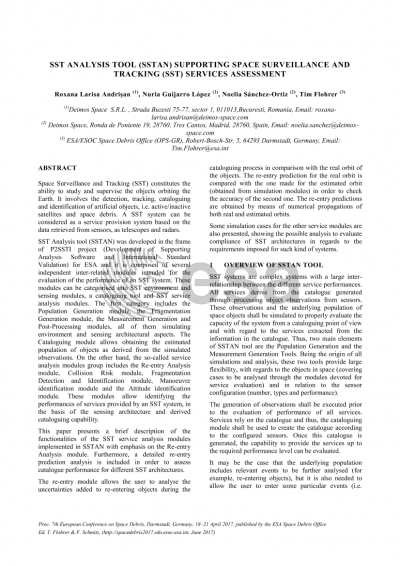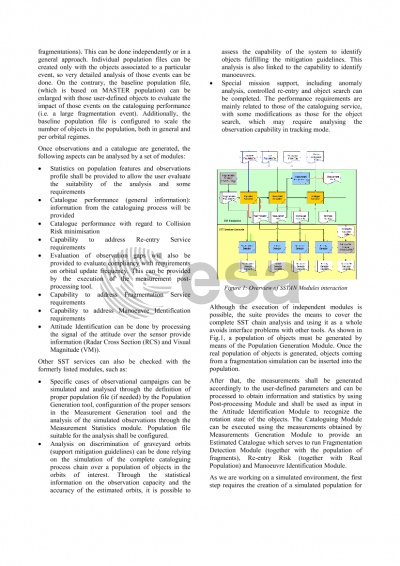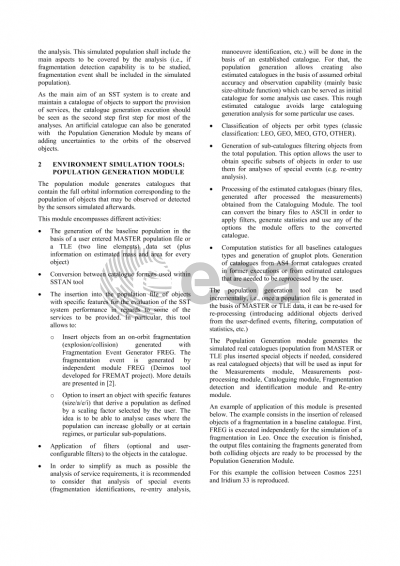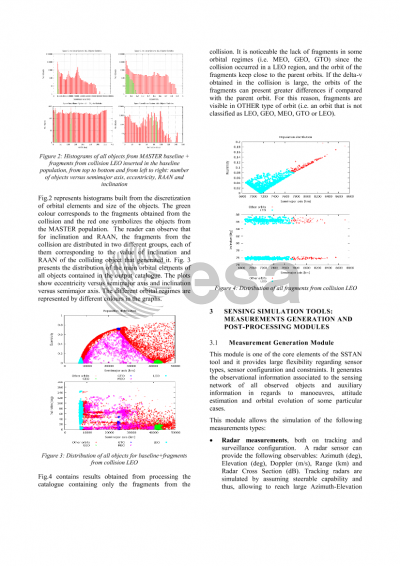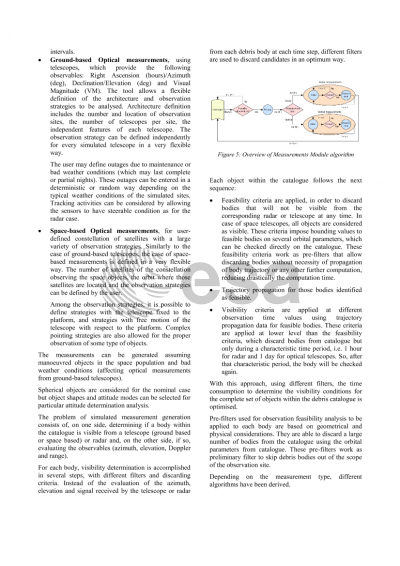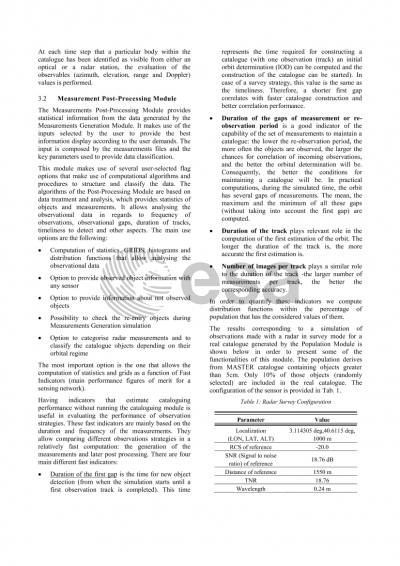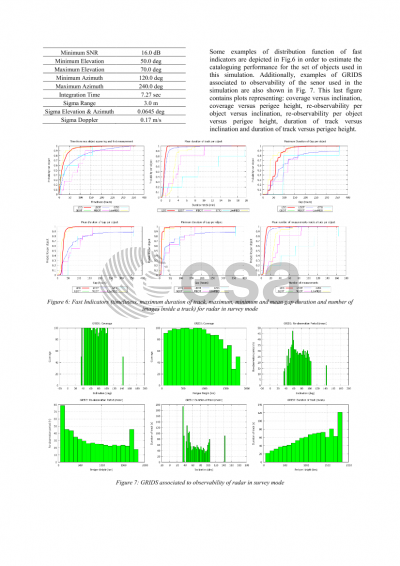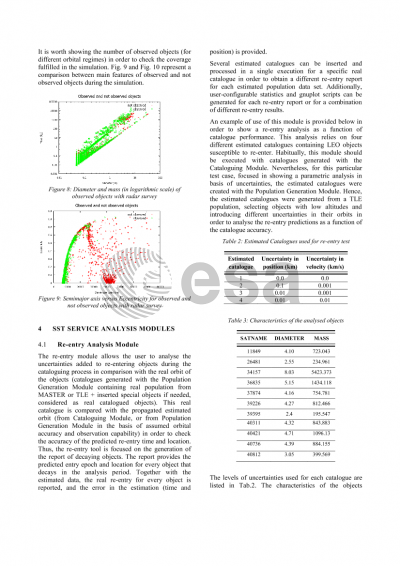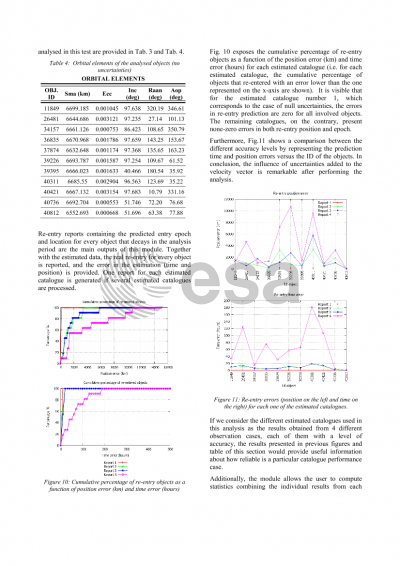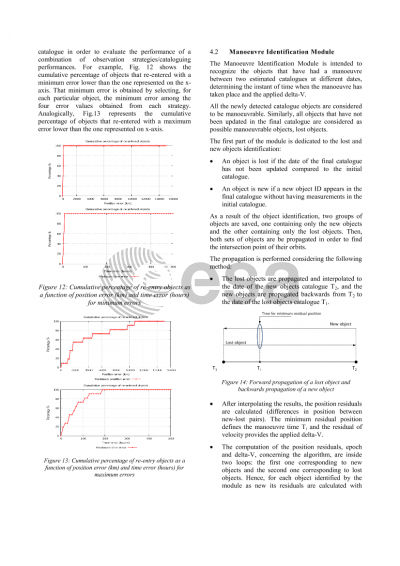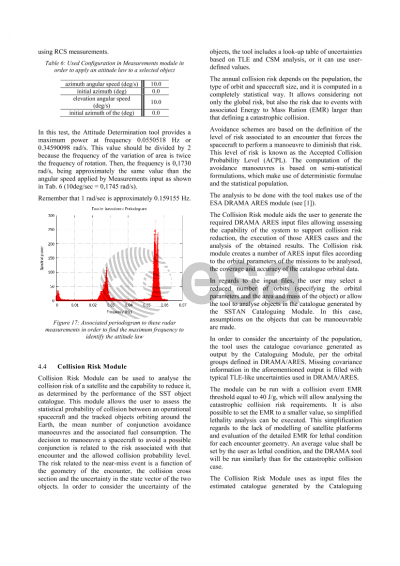Document details
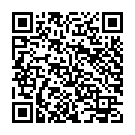
Abstract
Space Surveillance and Tracking (SST) constitutes the ability to study and supervise the objects orbiting the Earth. It involves the detection, tracking, cataloguing and identification of artificial objects, i.e. active/inactive satellites and space debris. A SST system can be considered as a service provision system based on the data retrieved from sensors, as telescopes and radars.
SST Analysis tool (SSTAN) was developed in the frame of P2SSTI project (Development of Supporting Analysis Software and International Standard Validation) for ESA and it is composed of several independent inter-related modules intended for the evaluation of the performance of an SST system. These modules can be categorised into SST environment and sensing modules, a cataloguing tool and SST service analysis modules. The first category includes the Population Generation module, the Fragmentation Generation module, the Measurement Generation and Post-Processing modules, all of them simulating environment and sensing architectural aspects. The Cataloguing module allows obtaining the estimated population of objects as derived from the simulated observations. On the other hand, the so-called service analysis modules group includes the Re-entry Analysis module, Collision Risk module, Fragmentation Detection and Identification module, Manoeuvre identification module and the Attitude identification module. These modules allow identifying the performances of services provided by an SST system, in the basis of the sensing architecture and derived cataloguing capability.
This paper presents a brief description of the functionalities of the SST service analysis modules implemented in SSTAN with emphasis on the Re-entry Analysis module. Furthermore, a detailed re-entry prediction analysis is included in order to assess catalogue performance for different SST architectures.
The re-entry module allows the user to analyse the uncertainties added to re-entering objects during the cataloguing process in comparison with the real orbit of the objects. The re-entry prediction for the real orbit is compared with the one made for the estimated orbit (obtained from simulation modules) in order to check the accuracy of the second one. The re-entry predictions are obtained by means of numerical propagations of both real and estimated orbits.
Some simulation cases for the other service modules are also presented, showing the possible analysis to evaluate compliance of SST architectures in regards to the requirements imposed for such kind of systems.
Preview
